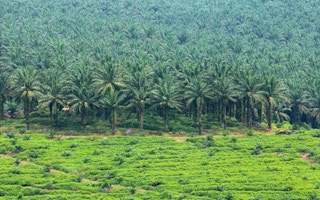Forest people’s groups say many governments are failing to protect their right to their ancestral lands, and argue that this neglect is damaging efforts to slow climate change.
Their argument is supported by campaigners. Research by the Rights and Resources Initiative (RRI) says the pace of provision of new legal protection for indigenous communities has fallen, despite an increase in professions of support by industry, governments and international initiatives like REDD+ and the UN’s Sustainable Development Goals.
RRI says fewer new laws have been passed to protect indigenous land rights since 2008 than in the six preceding years, and the legislation that has been enacted is weaker.
Previous RRI research into 12 emerging market countries found that at least one out of every three hectares licensed for natural resource development overlaps with indigenous community land. When private companies acquire land and resources without first checking who lives there, it says, they expose themselves and their investors to substantial risk, as some level of conflict or business disruption often results.
“
Indigenous communities, it is argued, are unlikely to over-exploit forest resources. Their understanding of the forests as the place on which they depend encourages them to resist deforestation and the piecemeal exploitation and destruction of their fauna and flora
The ownership of almost half the developing world’s rural, forest and dryland areas is contested, according to RRI, directly affecting the lives and livelihoods of over two billion people. They often have no formal title to the lands on which they live and depend, and can seldom legally defend their rights.
Better stewards
An RRI report, Lots of Words, Little Action: Will the private sector tip the scales for community land rights?, examines how land rights and attempts to mitigate climate change through REDD are linked.
One of its findings is that REDD+ initiatives are not yet translating into globally significant increases in the area under the ownership and control of indigenous peoples and local communities. Meanwhile, it says, the global forest area covered by industrial concessions is large and growing.
Global climate change efforts have a key role to play in securing the land rights of indigenous people and rural communities, it says. And when they are secured, that means less deforestation and more climate change mitigation.
Indigenous communities, it is argued, are unlikely to over-exploit forest resources. Their understanding of the forests as the place on which they depend encourages them to resist deforestation and the piecemeal exploitation and destruction of their fauna and flora.
Indonesia is the third-largest emitter of greenhouse gases, chiefly because of deforestation for palm oil and other natural resource extraction. One group, the Indigenous Peoples’ Alliance of the Archipelago (AMAN), says those it represents claim 40 million hectares of the country’s rainforests. If they are given stronger rights over their lands, AMAN says, they will help the country to fight deforestation and reduce climate change.
Wide regional variations
The head of AMAN, Abdon Nababan, is urging President Susilo Bambang Yudhoyon to formally implement a May 2013 Constitutional Court decision which declared unconstitutional a line in the country’s 1999 Forestry Law stating that customary forests are state forest. The Indonesian Government controls 96 per cent of the country’s forests.
The RRI report also highlights a number of regional differences:
- In Latin America, communities own or control more than 39 per cent of forests, a direct contrast with sub-Saharan Africa where less than 6 per cent of forests are controlled by communities.
- Of the recorded progress seen in Africa since 2002, 89% comes from the implementation of Tanzania’s Village Land Act (1999) and Forest Act (2002).
- Only two African countries in the study – Liberia and Mozambique – have statutory frameworks that recognize community ownership of land.
- Governments of the countries of the Congo Basin, which contains the world’s second largest rainforest, claim legal control of more than 99 per cent of forest land.
- By 2013, all 12 Asian countries surveyed had implemented some form of community tenure regime, but these laws affect less than 4 per cent of forestland in seven of the nations.
One of RRI’s campaigns seeks to double by 2018 the amount of land recognised worldwide as owned or controlled by indigenous peoples and local communities. Another effort is focused on REDD+, which RRI describes as “the world’s leading initiative to support forest conservation”.
REDD+ promises to respect the rights of indigenous people and local communities to protect forests and to sell the carbon they contain as offsets to polluters seeking to meet emissions targets.
The United Nations is leading the negotiations for new Sustainable Development Goals (SDGs) intended to guide economic development and poverty reduction for the next 15 years. But RRI is concerned that no specific target for land rights has yet been set for the SDGs.








